
Horse Riding
 |
Horse Riding |
 | Horse Types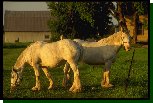 Horses and ponies are grouped by type or breed, yet each one is unique. There are many variations in colour even within the same breed and each horse has its own temperament. Some breeds such as the magnificent shire horses are more suited to heavy work while smaller horses and ponies are perfect for riding. Horses and ponies are grouped by type or breed, yet each one is unique. There are many variations in colour even within the same breed and each horse has its own temperament. Some breeds such as the magnificent shire horses are more suited to heavy work while smaller horses and ponies are perfect for riding.The height of a horse is measured in hands. One hand is about 10cm. Shire horses stand about 17 hands high. At the other extreme are the smallest British ponies, the Shetlands. They are only about 100cm high. These are popular ponies for young children. | |||||||||||
 | Riding Ponies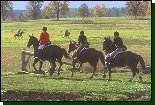 There are many types of horses and ponies that are suitable for riding and in this country some have been specially bred as riding ponies. The average height for a riding pony is 13 hands although a young rider may start on something smaller. Riding ponies are often a mixture of Welsh ponies or cobs, Arab and thoroughbred horses. There are many types of horses and ponies that are suitable for riding and in this country some have been specially bred as riding ponies. The average height for a riding pony is 13 hands although a young rider may start on something smaller. Riding ponies are often a mixture of Welsh ponies or cobs, Arab and thoroughbred horses. | |||||||||||
 | Choosing your Horse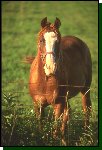 Experienced riders who know how to handle horses can choose from several breeds but as a beginner you need to choose more carefully. Your instructor will decide which horse or pony you should start on. A beginner's pony will be easy to handle, with a willing but quiet nature. It will certainly have had some basic training and it will be used to new riders. The pony chosen for you will also suit your height and weight so that you and the horse are comfortable. Experienced riders who know how to handle horses can choose from several breeds but as a beginner you need to choose more carefully. Your instructor will decide which horse or pony you should start on. A beginner's pony will be easy to handle, with a willing but quiet nature. It will certainly have had some basic training and it will be used to new riders. The pony chosen for you will also suit your height and weight so that you and the horse are comfortable. If you are buying a pony, you need to look for certain qualities and should ask for expert advice to make sure you are buying a horse that is suitable for you. | |||||||||||
 | Working with Horses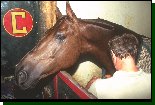 Horses are very sensitive animals and they respond well to kind treatment. If you have regular riding lessons at a school, you may ride the same horse each time. If this is the case then you can build up a feeling of trust between yourself and the horse. You will get to know the horse's actions and be able to respond to them. Horses are very sensitive animals and they respond well to kind treatment. If you have regular riding lessons at a school, you may ride the same horse each time. If this is the case then you can build up a feeling of trust between yourself and the horse. You will get to know the horse's actions and be able to respond to them. Whether the horse you use is your own or the school's there are some simple rules you should follow.
| |||||||||||
 | General Horse Care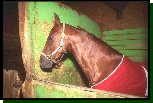 Although it is fun to ride a horse, other things are important too. Horses need to be fed regularly, groomed to keep them clean and healthy, and provided with a clean, comfortable stable and living area. Horses also need some exercise every day in a field especially when they haven't been ridden. Although it is fun to ride a horse, other things are important too. Horses need to be fed regularly, groomed to keep them clean and healthy, and provided with a clean, comfortable stable and living area. Horses also need some exercise every day in a field especially when they haven't been ridden. If you own a horse, you need to work out a daily routine for looking after him. Horses need a routine. Those of you who ride at a stable can learn about horse care by offering to help out after school or at the weekend. Many riding schools have special days during the school holidays when volunteers can help to muck out the stables, feed the horses and clean the tack (bridle, saddle and bit) | |||||||||||
| ||||||||||||
 | ||||||||||||
|
| ||||||||||||